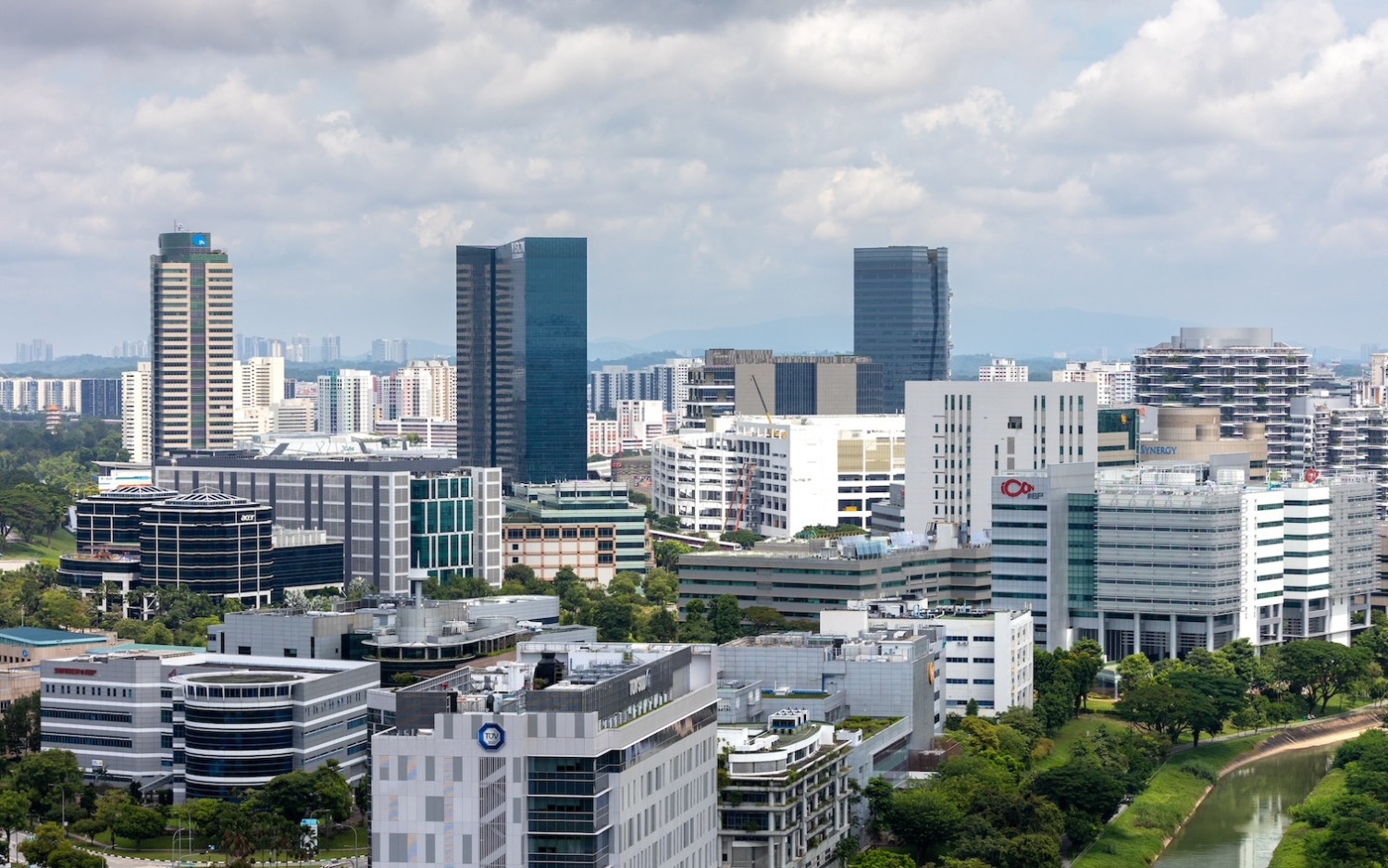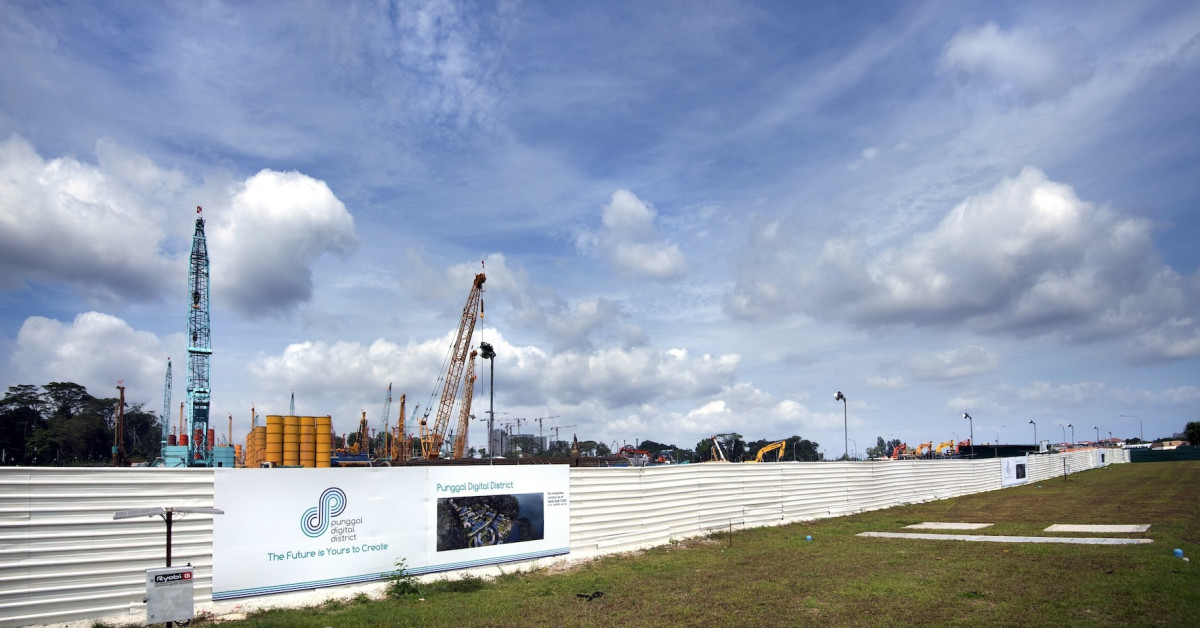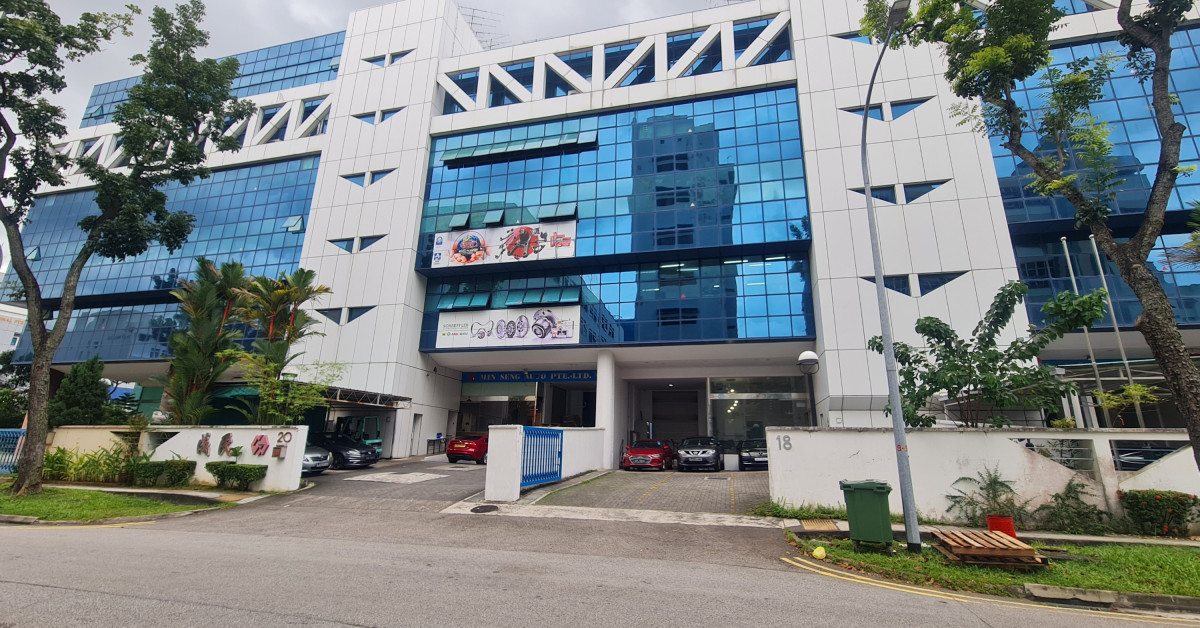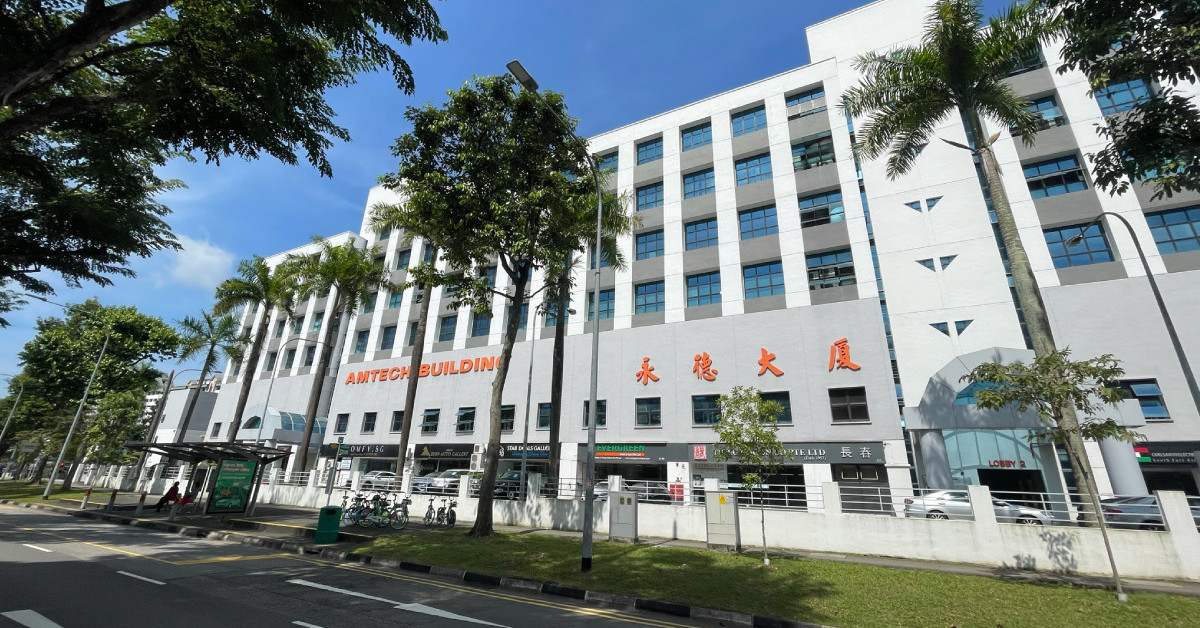Industrial rents, prices rose for 13th straight quarter in 4Q2023
By Cecilia Chow
/ EdgeProp Singapore |

Business parks recorded negative net demand in 2023, driven mainly by suburban business parks as occupiers embarked on a flight to quality (Photo: Samuel Isaac Chua/EdgeProp Singapore)
Ask Buddy
Past Industrial sale transactions
Price trend for industrial property sales
Past Industrial rental transactions
Listings for industrial property
Compare price trend of Commercial vs Industrial properties
Past Industrial sale transactions
Price trend for industrial property sales
Past Industrial rental transactions
Listings for industrial property
Compare price trend of Commercial vs Industrial properties
JTC's 4Q2023 quarterly report released on Jan 25 showed that industrial rents and prices rose 0.6% q-o-q and 1.7% q-o-q for the 13th straight quarter.
The 1.7% q-o-q rise in the all-industrial property rental index was the slowest in six quarters, points out Tay Huey Ying, head of research & consultancy, JLL Singapore. She says the 0.6% q-o-q rise in the all-industrial property price index was the slowest in nine quarters.
Industrial rent and prices in 2023 have soared by 18.9% and 19.1% compared to the trough in 3Q2020, JLL's Tay adds.
Advertisement
Advertisement

Source: JTC 4Q2023
With higher financing costs, however, overall industrial price growth moderated to 5.1% y-o-y in 2023 from 7.5% y-o-y the previous year. Rents surged 8.9% y-o-y, extending the previous year's 6.9% y-o-y growth.
Rental growth last year was due to "a dearth in supply and resilient demand from new economy sectors such as third-party logistics (3PL), tech and biomedical", says Brenda Ong, executive director of logistics and industrial at Cushman & Wakefield (C&W).
While broad-based, industrial rental growth was driven primarily by newer stock. "Given higher inflation, landlords also held steady on their asking rents," adds Ong.

Source: JTC 4Q2023
'Flight to quality' and consolidation
Multi-user factories registered robust rental growth of 10.7% y-o-y in 2023, propelled by newer, better-located stock. Warehouses grew 8.5% y-o-y, with demand supported by robust demand from 3PL (third-party logistics) players amid very tight supply. Single-user factory and business park rents rose 7.0% y-o-y and 3.4% y-o-y, respectively. "A flight to quality continues to characterise the market as companies look to consolidate their operations in modern industrial stock," Ong says.
Overall industrial vacancy rates rose 0.4%-points to 11% in 2023 -- the highest level recorded since 2017. C&W attributes the rise in vacancy to the single-user factory segment, where net supply has overwhelmed net demand as companies consolidate or relocate their operations to new facilities.

Source: JTC 4Q2023
Multi-user factories saw the most substantial increase in occupancy, which improved from 0.8% points to 90.5% in 4Q2023. It registered a 1.4%-point increase for 2023, the strongest across all industrial segments. Tricia Song, CBRE head of research for Singapore and Southeast Asia, likewise attributes it to "a flight to quality, as the take-up for newer factories with quality specifications remain healthy".
Advertisement
Advertisement
Business parks recorded negative net demand in 2023, driven mainly by suburban business parks as occupiers embarked on a flight to quality. Vacancy rates in the segment rose 21.6%, the highest level since 1Q2011. "Amidst heightened interest rates, some tech occupiers have grown cost conscious and have right-sized as they increasingly adopt hybrid work practices," says C&W's Ong.

Multi-user factories saw the most substantial increase in occupancy, which improved from 0.8% points to 90.5% in 4Q2023 (Photo: Samuel Isaac Chua/EdgeProp Singapore)
Financing costs 'still a challenge'
Industrial property transactions (based on caveats lodged) fell to 387 in 4Q2023. It reflected a 12.4% q-o-q growth or 20.4% y-o-y. Ong adds that the growth is even higher than the average quarterly sales of 310 in 2019.
"Although the general sentiment among investors is that interest rates have peaked and are likely to come down in 2024, current financing costs are still a challenge for some investors," says CBRE's Song. "That said, yields for leasehold industrial assets remain attractive as they offer investors a positive carry."

Source: 4Q2023
CBRE Research estimates that around 22 million sq ft of new industrial space (3.9% of total stock) will be completed in 2024. Single-user factory space makes up slightly over half (57%), while warehouse space accounts for 19%. The remainder of the pipeline comprises business parks and multi-user factories at 13% and 11%, respectively.
While economic uncertainties could persist in the near term, some green shoots have emerged: the manufacturing sector grew 3.2% y-o-y in 4Q2023, after three consecutive quarters of contraction, according to advance GDP estimates on Jan 2, 2024.

While economic uncertainties could persist in the near term, some green shoots have emerged: the manufacturing sector grew 3.2% y-o-y in 4Q2023 (Photo: Samuel Isaac Chua/EdgeProp Singapore)
'Recovery remains fragile'
"With the anticipated recovery in global electronics demand for 2024, manufacturing is expected to rebound," says Song, "which should continue to support demand for industrial space."
Advertisement
Advertisement
In line with the gradual recovery in manufacturing, demand from the electronics and biomedical sectors should improve. "Nonetheless, the recovery remains fragile," cautions C&W's Ong. "We anticipate moderate rental growth in 2024, given increasing tenant resistance in a high-for-longer interest rate environment."

Source: JTC 4Q2023
Prime logistics and warehouse are expected to outperform, with full-year rental growth of 4% to 5%, says C&W. Despite the strong demand from warehouse users, Ong sees growing resistance to rising rents and some shadow warehouse space emerging.
City-fringe business parks and new suburban business parks are expected to remain resilient and to see moderate rental growth of 2% to 3%, according to C&W. Led by newer and better-located stock, conventional factory and high-tech factory spaces are anticipated to see mild rental growth of 2% to 3% in 2024, in line with a surge in factory supply.

Source: JTC 4Q2023
Ramped-up supply
Supply will be ramped up over the next two years. With an average annual supply of 1.1 million sqm coming on stream between 2024 and 2026, it far exceeds the annual demand of 0.7 million sqm over the past three years, says Catherine He, Colliers' head of research, Singapore.
"Given the increased options available to tenants, landlords may have to soften rents and be more flexible to smaller requirements," notes He. "On the investment front, there is likely to be more sale and leaseback transactions or portfolio sales to free up balance sheets and in the search for higher returns."

More redevelopments and refurbishments of older assets are expected in light of the preference for high-quality modern industrial facilities (Photo: Samuel Isaac Chua/EdgeProp Singapore)
He notes that more redevelopments and refurbishments of older assets are also expected in light of the preference for high-quality modern industrial facilities.
"Industrial performance would be fragmented in 2024, as increased supply could lead to higher vacancies and stagnating rents," He reckons. "On the other hand, shipping disruptions due to escalating geopolitical issues could bring tailwinds for warehouse space demand."
Check out the latest listings for Industrial Real Estate properties
Ask Buddy
Past Industrial sale transactions
Price trend for industrial property sales
Past Industrial rental transactions
Listings for industrial property
Compare price trend of Commercial vs Industrial properties
Past Industrial sale transactions
Price trend for industrial property sales
Past Industrial rental transactions
Listings for industrial property
Compare price trend of Commercial vs Industrial properties
https://www.edgeprop.sg/property-news/industrial-rents-prices-rose-13th-straight-quarter-4q2023


Follow Us
Follow our channels to receive property news updates 24/7 round the clock.
Subscribe to our newsletter
Advertisement
Advertisement
Advertisement
Top Articles
Search Articles


